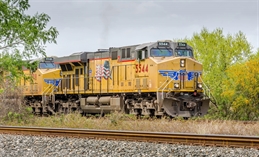
Importers in the United States have had a nervous runup to an early taste of peak season traffic as they were bracing for the resumption of the full flow of goods from Shanghai after the end of the lockdowns there. It has not helped that predictions about the rebound varied widely.
Some pundits argued that there would be a mild surge rather than a full-blown tsunami of imports, pointing to strong imports from China that hit U.S. West Coast ports over the past couple of months. The port of Long Beach had its busiest April on record, and neighboring Los Angeles posted its second-highest container volume for April.
Gene Seroka, executive director of the Port of Los Angeles, noted that there was not much change in terms of vessel arrivals from China. Shippers have used other marine gateways in China to move their exports to North America, he said.
Others have pointed to declines in average shipment volumes out of Hong Kong, Shenzhen, and Ningbo as indicators that the reopening of Shanghai would unleash a torrent of shipments that had been stuck during the lockdown.
Moreover, the National Retail Federation has projected a 5.1% increase in U.S. imports in the first half of this year over the same period in 2021, reasoning that importers would be bringing in goods early before inflation drives prices higher.
Another factor that complicates planning is the spectre of inflation stifling consumption, which would leave companies sitting on large inventories. Already some segments, notably furniture and appliances, are experiencing gluts. Walmart signalled in May that its inventory level was higher than planned.
With warehousing availability at record lows, this points to a high chance of congestion spreading through the system.
Container lines have accused importers of keeping containers on chassis in their warehouse yards as additional storage space, which has affected the availability of boxes and chassis, contributing to congestion at the ports.
Ports and terminal operators have worked hard to clear backlogs and smooth flows. At the port of Long Beach, terminals stay open longer, imports and empty units are removed from the docks as fast as possible, and the port authority is rushing to finalize its ‘Supply Chain Information Highway’, a data tracking solution that is free for shippers and stakeholders.
The Northwest Seaport Alliance and the Port of Oakland have voiced their support for the concept.
In last year’s congestion, an important tool was the use of inland ports and pop-up container yards. Now ports and lawmakers are looking to this as a long-term strategy to move cargo off the docks to avoid the build-up of boxes that hamper operations and slow down the unloading of ships.
In April the container ports in California announced a project to collaborate with importers and exporters as well as local development agencies to develop four inland ports.
The California Inland Ports Project is a US$30 billion, 400-mile trade corridor from the ports to Sacramento. It envisages four major hub ports as well as several smaller satellite ports to handle cargo.
Importers in Canada have also begun to view inland ports as long-term strategic options. Last year Canadian Tire, one of Canada’s largest retailers, acquired a 25% stake in Ashcroft Terminal, an inland port some 300 km from Vancouver.
Container yards are also becoming an instrument to alleviate congestion for exporters. The port of Oakland and the Northwest Seaport Alliance is setting up such sites for agriculture exports, a sector that was severely affected by the lack of access to ports last year, resulting in millions of dollars of lost revenue for farmers.
This is meant to reduce congestion, give agriculture goods exporters ready access to available equipment, and speed up pick-ups. The U.S. Department of Agriculture pays users of the facilities US$200 per dry box and US$400 per reefer box.
A major contributing factor to last year’s congestion was the railroad system, with major inland terminals clogged up which led to delays spreading through the rail networks and backing up cargo at ports.
Once again rail issues are a major worry for importers this year. BNSF and Union Pacific, the two Class I railroads that serve the Pacific Coast gateways, have struggled this spring.
Ports have blamed shortages of rail cars, locomotives, and crews for the fact that container dwell times have risen again. In April they averaged 9.6 days at Los Angeles and Long Beach, up from 7.7 days in March and three days back in December.
Likewise, the Northwest Seaport Alliance has reported longer rail dwell times owing to shortages of rail equipment and crews.
Operators have signalled that trailers and chassis are once again in short supply, another factor that contributed to last year’s congestion.
Importers and forwarders have shifted imports from the West Coast to gateways on the East Coast and the Gulf of Mexico. This has produced stronger growth at these ports than in their West Coast counterparts.
According to one report, April was the eleventh month in a row that volume growth at East Coast and Gulf ports outperformed increases at western gateways. Charleston, Houston, and New York/New Jersey all had volume increases in excess of 20 percent.
This has resulted in a rise in ship wait times at East Coast ports. In April there were more vessels waiting for berth space at the port of Charleston than at the California ports.
One forwarder remarked that there is no silver bullet to beat congestion.
Shippers and their logistics providers have to collaborate in their planning early in the game and explore all routing options, including exotic routes that involve detours, he said.
By Ian Putzger
Correspondent | Toronto



